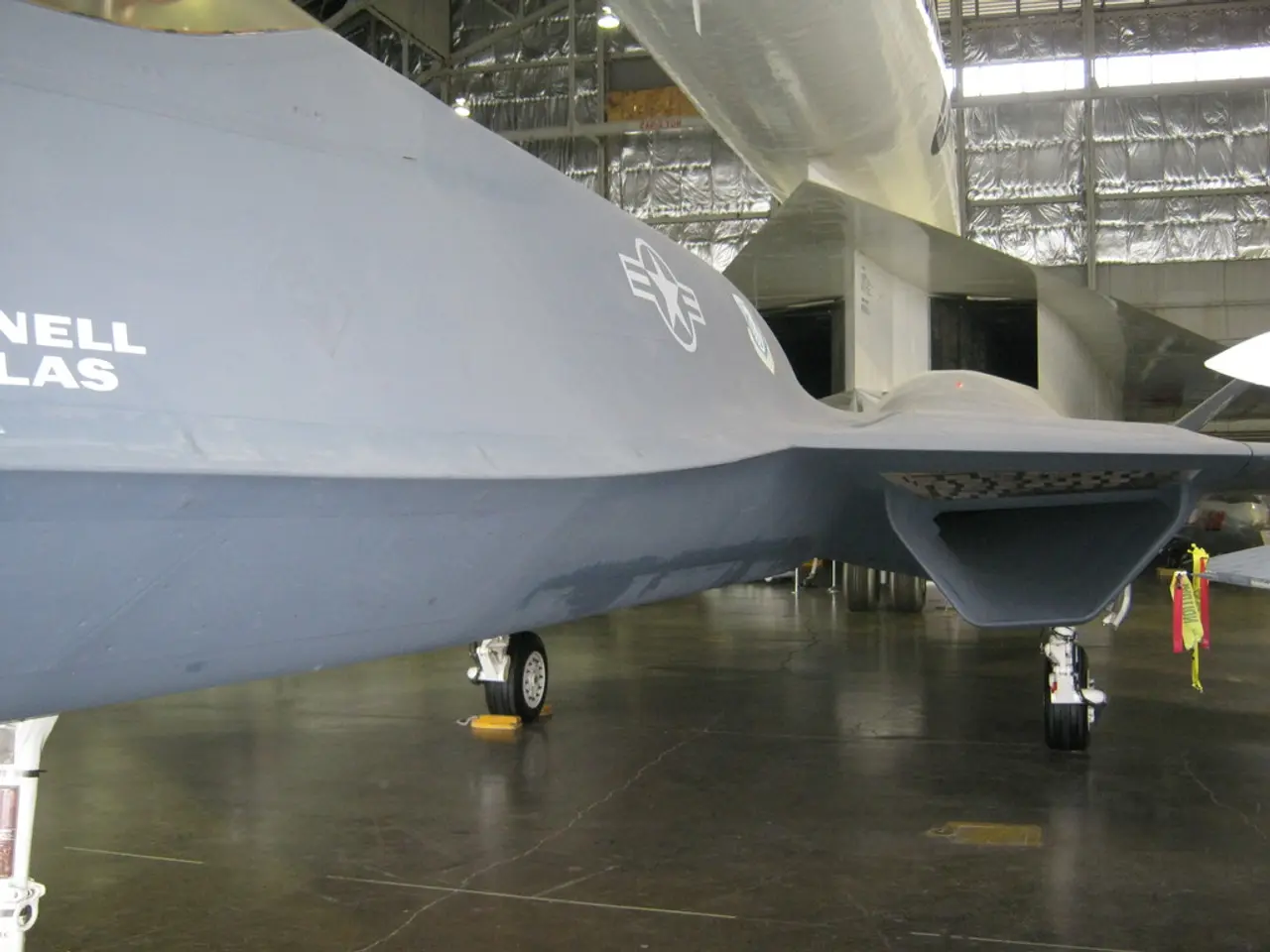Is it possible to travel from New York to Los Angeles in just 12 minutes?
The world of aviation is abuzz with excitement as developments in hypersonic passenger planes promise to drastically cut flight times, making a New York to Tokyo journey possible in just 90 minutes. However, these advancements remain largely in experimental or early prototype stages.
Pioneering Hypersonic Propulsion
Key technological breakthroughs focus on hypersonic propulsion engines capable of sustained operation between Mach 5 and Mach 10 speeds. Notable among these innovations is the work of Venus Aerospace, who are developing hybrid hypersonic engines that integrate multiple engine functions into one unit. These engines, combining Rotating Detonation Rocket Engine and Variable Detonation Ramjet technology, offer 15–25% better fuel efficiency than traditional engines and could pave the way for practical hypersonic passenger planes [1].
China has also made strides in hypersonic propulsion, revealing an engine achieving speeds up to Mach 16 with an energy conversion efficiency of 80% using a dual-mode detonation process. This technology could enable globe-circling flights within 2 hours, potentially making 90-minute trips like New York to Tokyo a reality if applied to passenger aircraft [2].
The Road Ahead
Currently, hypersonic propulsion technologies are mostly in advanced testing or prototype phases, with commercial deployment of practical hypersonic passenger planes not scheduled for this decade [1][2][4][5]. Medium-term developments (over the next 5–15 years) are likely to involve sustained testing of RDE, scramjet, and hybrid engine technologies, along with demonstrator vehicles focused on military and cargo use before passenger adaptations.
Long-term hypersonic commercial flights spanning 90-minute global trips will require breakthroughs in thermal management, noise reduction, regulatory approval, and infrastructure development beyond propulsion.
Dream Chaser: A Reusable Mini-Shuttle
Meanwhile, Dream Chaser, a reusable mini-shuttle developed by Sierra Nevada Space Systems, is making strides in the realm of space travel. Launching via an Atlas V rocket and landing like an airplane, Dream Chaser is contracted to ferry up to seven astronauts and cargo between the International Space Station (ISS) and Earth [8].
The Future of Supersonic and Hypersonic Travel
While hypersonic passenger planes remain a distant dream, supersonic travel is making a comeback. Projects like Boom Supersonic’s Overture jet plan supersonic (Mach ~2) commercial flights by the early 2030s, addressing past issues like noise and fuel efficiency [3]. Although these planes are still far from hypersonic speeds or 90-minute transpacific flights, they represent an important step forward in faster air travel.
In the realm of hypersonic travel, HyperMach has announced SonicStar, a sonic-boom-less plane designed to fly twice as fast as Concorde [6]. SonicStar will cruise at Mach 3.6 at an altitude of 60,000 feet and carry 10-20 passengers between New York and Dubai in two hours, 20 minutes [7].
As we look to the future, the promise of hypersonic passenger planes offers the tantalizing prospect of drastically reduced travel times. However, it is important to remember that these advancements are still in their early stages, with many challenges to be overcome before we can expect to see practical, economically viable hypersonic commercial passenger flight become a reality.
[1] https://www.popularmechanics.com/space/a16442511/venus-aerospace-hypersonic-engine-hybrid-rocket/ [2] https://www.popularmechanics.com/space/a36262812/china-hypersonic-engine-mach-16/ [3] https://www.boomsupersonic.com/ [4] https://www.darpa.mil/program/hypersonic-air-breathing-weapon-concept [5] https://www.defenseone.com/technology/2020/08/darpa-awards-60-million-talon-a-program-hypersonic-weapon-tests/167994/ [6] https://www.hypermach.com/ [7] https://www.popularmechanics.com/space/a36357713/sonicstar-supersonic-plane-hypermach/ [8] https://www.nasa.gov/feature/nasa-awards-12-commercial-crew-integrated-capability-contracts
- In the realm of aviation, technological progress is being fueled by advancements in hypersonic propulsion, such as the hybrid engines developed by Venus Aerospace.
- China's hypersonic propulsion research has yielded an engine capable of speeds up to Mach 16, potentially revolutionizing global travel.
- The road ahead for hypersonic commercial flights involves years of sustained testing and development, including regulatory approval and infrastructure improvement beyond propulsion technology.
- Dream Chaser, a reusable mini-shuttle, is making strides in space travel, contracted for missions between the International Space Station and Earth.
- While hypersonic passenger planes are not anticipated in this decade, supersonic travel is making a comeback, with Boom Supersonic's Overture jet planning supersonic commercial flights by the early 2030s.
- HyperMach's SonicStar, a sonic-boom-less plane, promises to drastically cut transatlantic flight times, carrying 10-20 passengers between New York and Dubai in just 2 hours, 20 minutes.




